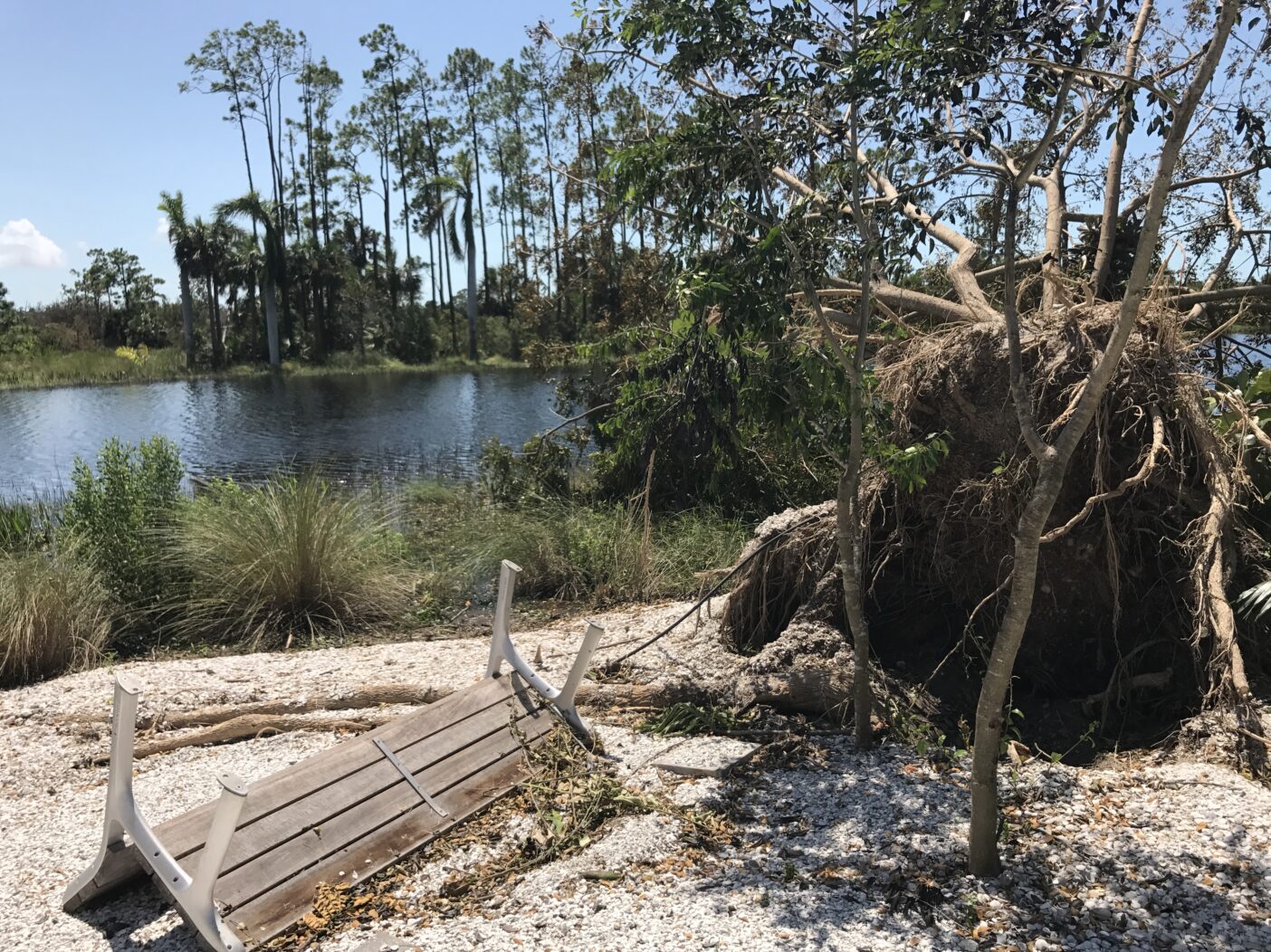
For many Southwest Floridians, memories of 2017’s Hurricane Irma have faded with time.

At the Garden, however, trees and plants continue to remind us of the storm’s impact, the changes it wrought, and — most importantly — nature’s remarkable healing power.
That last point became oh-so-clear recently when our horticulturalists decided to replant portions of the Kapnick Brazilian Garden. Irma’s winds shredded its tree canopy, scorching the shade-loving understory. At the time, the team removed most of the existing plants and installed sun-tolerant varieties. For the next 4 ½ years or so, those replacements prospered. Until recently. The canopy has knitted itself back together, casting the lower portion of the Brazilian Garden into shadow.

David Chadwick, the horticulturalist who oversees that garden, points to a browning bromeliad that’s longing for more light.
“We’re starting to lose plants like these,” he says. His cart is filled with shade-tolerant plants that will go in their place. With the sunlight dimmed, David wants to keep the landscape from looking drab. He selected Vriesea and Guzmania bromeliads, with their brightly colored bracts, and foliage that feature all sorts of patterns and hues. (Click here to learn more about using foliage to add interest to your landscape).
David’s replanting of the Brazilian Garden got us thinking about the many other trees and portions of the Garden that have changed in Irma’s wake, and how nature works on “botanical” time.
In our parking lot stand a couple of gumbo limbo trees (Bursera simaruba) that survived Irma’s wrath. Senior Horticulture Manager Danny Cox points to one that lost a large limb in the storm.
“To give you a sense of time, it’s not even quite fully healed,” he says. The knob is rough and indented; eventually it will smooth over, like a scar.
Some storm-felled trees flourish in the years after horticulturalists uprighted them.
“I think the last tree to be put back up after Irma was the monkey flower tree, Phyllocarpus septentrionalis,” says Liz Chehayl, the Brian Holley Curator of Collections. “If you look up at the canopy of this tree now, the copper leaves of the vine Bauhinia aureifolia, planted at its base well before Irma, are shimmering in the sunlight.” The tree and vine are located near the Chabraja Visitor Center.
In the Lea Asian Garden, Danny puts his hand on a betel nut palm.
“This guy was down,” he says. As the tree regrew, it arched upward, as if looking for the sun.
The shaving brush tree in the Kapnick Brazilian Garden nearly got the ax, but it sent out numerous shoots before the staff had a chance to remove it, Danny says. The tree both saved itself and enhanced its visibility. The tree now has six “leaders,” or trunk-like structures that stretch out in all directions, allowing visitors to see up close the fuzzy pink blooms that give the tree its moniker.
Some trees, of course, did not make it, including the “dancing tree,” a Ceiba that had long graced the pathway in the Brazilian Garden with its spectacular pink blossoms. In its place, however, the staff planted a Coussapoa with charisma of its own. Like many tropical trees, it has grown swiftly to erase gaps in the landscape.
Liz looks to bright spots in other losses.
“At first, I missed the Hong Kong orchid tree, Bauhinia X blakeana, which could not be put back up after the storm, but now when I look at its former place, we would not have had room for the rain tree, Albizia saman, to reach its full spread. Nor would we have had room for the three mature lignum vitae, Guaiacum sanctum,” she says. The area to which she refers is near the LaGrippe Orchid Garden entrance.

The ongoing Irma experience provides a testimony to adaptability — nature’s and ours. Now, we certainly don’t intend to sit back and let nature entirely take its course. Occasionally, you’ll see a certified arborist in our trees, pruning them, clearing branches from buildings, and creating openings allowing the wind to move through them more easily. Part of our adaptation? Learning from the past.
 About the Author
About the Author
Jennifer Reed is the Garden’s Editorial Director and a longtime Southwest Florida journalist.

